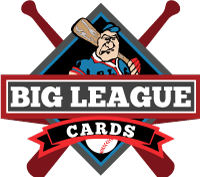Inside the Pack: Remembering Eddie Grant on Memorial Day
Major League Baseball had a rich history of its players — even its stars — enlisting in the military from the league’s early days through the Korean War. The sport was fortunate to not have encountered much death on the battlefield. The deadliest war for baseball was World War I, which saw eight players or former players killed in action. The majority of those killed had spent very little time in the majors, with one notable exception: Eddie Grant, who played almost 1000 big league games between 1905 and 1915.
Grant was a Harvard graduate, earning him the nickname “Harvard Eddie,” because nicknames in the early 1900s weren’t particularly complicated. Following his graduation, Grant played a few games for Cleveland as an emergency replacement for Nap Lajoie. He played for the Phillies from 1907 through 1910, the Reds from 1911-1913, and the Giants from 1913-1915, before eventually retiring. He had a career .249 batting average and 153 stolen bases.
With his baseball career over, Grant decided to put to use his law degree that he earned from Harvard in 1909 while playing baseball. After briefly practicing law in Boston, he became one of the first men to enlist in the military when the United States entered World War I. Grant became an Army captain. While serving in France, Grant took part in the Meuse-Argonne offensive, which to this day is the largest battle in American military history with 1.2 million soldiers, and the deadliest with 350,000 casualties. Grant’s superior officers were all killed, and as he took command of his battalion, he was killed by an explosion, becoming baseball’s first casualty of the war. On Memorial Day 1921, the New York Giants reveals a plaque dedicated to Grant and his service. The plaque went missing after the team’s final game in New York in 1957, and a replica plaque has been on display at the San Francisco Giants’ stadium since 2006.
Because he played in the majors for a decade, which just so happened to be a time of many baseball card releases, collectors who want to memorialize Grant have several issues to choose from. Though he wasn’t included in the T206 set, he did have a card in its caramel counterpart, the 1909 E90 American Caramel set. He was also part of the T206’s little brother set, the T205 Gold Borders. One of my favorite sets, the 1910 M116 Sporting Life issue, includes Grant, as do the much rarer 1911 Close Candy and 1911 Helmar Stamps sets.
For fans of oversized cards, Grant has two: the horizontal T202 card, which features him on both an end panel and the middle section, and the vertical T201 Mecca Double Folders. Adventurous collectors who want to venture outside of traditional cards can collect several offerings. Pinback collectors have the 1909 Luxello Cigar Pins and 1910 P2 Sweet Caporal Pins. 1909 PX7 Domino Discs and 1912 and 1913 Colgan’s Chips offer collectors round inserts made of metal and paper, respectively. And you could use your 1914 B18 Blanket to tuck the rest of your cards in at night.
Modern collectors aren’t out of luck either. Though he’s never had a Topps issue, Grant appeared in the iconic 2006 SP Legendary Cuts set, where his base card is serial numbered to 550. He’s also in the 2011 Tristar Obak set, where he has both a base card and a shortprint that pictured him with — you guessed it — the Army.




